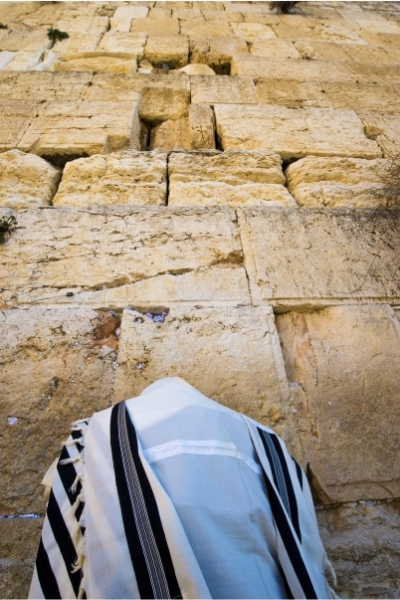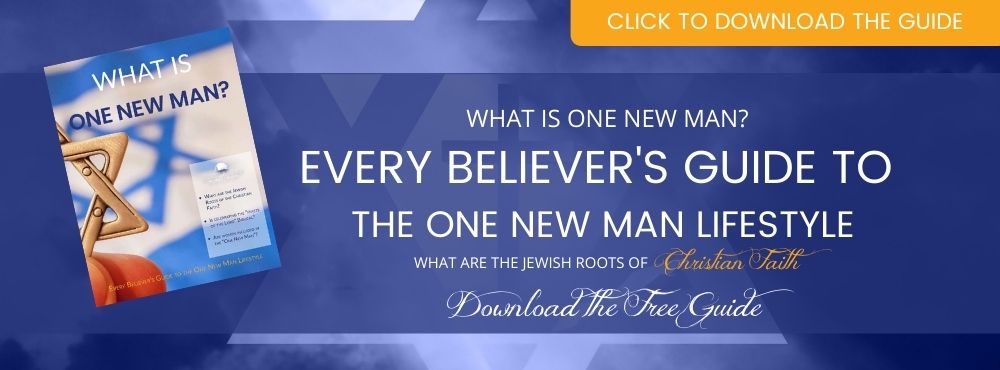A Proposal | God’s Offer of Unity
Table of contents
In 1 Kings, when Elijah is first led to Elisha, Elijah drapes his cloak over Elisha. In the Book of Ruth, Ruth invites Boaz to spread the edge of his cloak over her. But while the full extent of what these actions mean are overlooked by Believers today, there is a great deal we can learn from them…
Join us as we discover the proposal, unity, and authority hidden within, and how it applies to us today!
A Cloak? Or Something More
A cloak, as we know it, is essentially a piece of material which is prepared for the purpose of keeping an individual warm and dry.
Today cloaks are a rarely used garment, but in many parts of the world garments such as these were commonplace…
In fact, even in biblical times, a cloak was an important item.
Yet, the cloak we understand today and the one often meant in biblical stories are not necessarily the same thing. It is quite possible that some or even all of the cloaks mentioned in the Word of God were not ‘cloaks’ at all… but instead the physical obedience of God’s command for His children to wear tzitzit on the corners of garments, similar in that respect to the tallit! A place to tabernacle with God.
This is what Jesus would have been covered with as the Rabbi that He was. A tallit. We know this not only because of His rabbinical position however, but because of the Scriptures…
Consider the biblical account of the woman who had been bleeding for twelve years and managed to touch the edge of His ‘cloak…’
“…As Jesus was on his way, the crowds almost crushed him. And a woman was there who had been subject to bleeding for twelve years, but no one could heal her. She came up behind him and touched the edge of his cloak, and immediately her bleeding stopped.
“‘Who touched me?’ Jesus asked.
“When they all denied it, Peter said, ‘Master, the people are crowding and pressing against you.’
“But Jesus said, ‘Someone touched me; I know that power has gone out from me.’
“Then the woman, seeing that she could not go unnoticed, came trembling and fell at his feet. In the presence of all the people, she told why she had touched him and how she had been instantly healed. Then he said to her, ‘Daughter, your faith has healed you. Go in peace.’”
—Luke 8:42-48 (NIV)
It was more than a simple cloak meant to keep a person warm and dry. This ‘cloak’ was the tallit of our Rabbi… Yeshua our Messiah! And at the edge of it were the ‘tassels’—tzitzits—that separate one as holy and serve not only as a physical symbol of being set apart, but also as a reminder of God’s Word and Commandments.

A tallit is meant to connect the wearer with God, and with His Word and Commandments—a constant reminder of things above. However, it can also—through this connection—serve as a marker of who one is, particularly in the spirit. Denoting one’s God-given spiritual authority. Just like it did with Elijah, Elisha, and others.
Certainly, a cloak and a tallit are each forms of covering. And no matter if God is covering us, in a cloak or a tallit, we want God to be our covering; to cover us under the shadow of His wings, under His love, under the wedding tallit…
Spread Your ‘Cloak’
So we know that the cloaks of the Word may primarily have been equivalent to the tallit, but what is the importance of ‘spreading your cloak’ over someone?
- Why did Elijah put his mantel, cloak, or tallit on Elisha?
- Why did Ruth request Boaz to spread his cloak upon her?
Interestingly, the meanings and reasons behind each of these examples are both similar and dissimilar.
Both were, in a way, asking a question. Of commitment. Of choice. Of covenant.
Both were demonstrating an openness to unity. Of being in one accord.
Both were behaving in a way that could shift authority…
Let us first explore 1 Kings 19:16, when the Lord tells Elijah…
“…Elisha the son of Shaphat of Abel Meholah you shall anoint as prophet in your place.”
Upon hearing the word of the Lord, Elijah was quick to act, leading us to 1 Kings 19:19-21…
“So he departed from there, and found Elisha the son of Shaphat, who was plowing with twelve yoke of oxen before him, and he was with the twelfth. Then Elijah passed by him and threw his mantle on him. And he left the oxen and ran after Elijah, and said, ‘Please let me kiss my father and my mother, and then I will follow you.’
“And he said to him, ‘Go back again, for what have I done to you?’
“So Elisha turned back from him, and took a yoke of oxen and slaughtered them and boiled their flesh, using the oxen’s equipment, and gave it to the people, and they ate. Then he arose and followed Elijah, and became his servant.”
Within the NIV and numerous other versions of this text, Elijah’s mantel is referred to as a cloak. Yet, no matter what moniker is given in the English translations, the belief of many biblical scholars and teachers is that Elijah’s mantel/cloak was a tallit.
But why is this important?
In obedience to God’s instruction to anoint Elisha in his place, Elijah placed his mantel upon Elisha. His tallit…
And that tallit symbolized many things. For one, it would have made Elijah stand out from others as a prophet and follower of the Lord. It would have symbolized his authority in the natural AND in the spirit. And while God’s prophetic call on Elijah’s life would not have vanished without his mantle, it would have been a sign of it.
By placing THAT on Elisha, Elijah was making a statement. One that would have been recognized in the spiritual and physical realms. And Elisha certainly understood that…
- This was a covenant proposal, not really from Elijah, though Elijah certainly came into agreement… this covenant proposal was from God.
- God chose Elisha to follow in the footsteps of Elijah as a prophet to Himself and His people.
- It was a proposal of unity. With the prophetic call of Elijah, and with God and His will.
- It was an offering of authority. Within Elijah’s group. In much of the land around them. In the spiritual realm. And with God—through working in alignment with the ONE to whom all power and authority reside.
In that one action of Elijah ‘spreading his cloak’ over Elisha, all of this, and more was revealed to Elisha and all who were witness to it.
But what of the example of Ruth asking Boaz to spread his cloak over her? What did that represent? What did it mean?
Interestingly, much of the meaning is the same… but at the same time, vastly different.
When a man wanted to marry a woman during much of biblical times, one custom was for him to spread his cloak—tallit—over the woman in question. And even today, within many Jewish weddings, this is echoed. Often by the chuppah—wedding canopy—that is covered either in a white cloth or tallit; while still another way is through the groom sharing his tallit with his bride.
When Ruth requested of Boaz, “…Spread your cloak over me, for you are a redeeming kinsman” (Ruth 3:9 MEV), it was not a simple request. Ruth was asking him to marry her. To redeem her.
For Ruth to respond to Boaz in this manner was a brave and bold thing, but her request was from a place of love for her mother-in-law, Naomi, who asked her to do it. And Ruth knew Boaz. She had found favor in his sight.
And while her request entails far more than we can explore here, we can see the similarities and differences in the actions of both Ruth and Elijah—in authority, in covenant, in unity…
Ruth, unlike Elijah, did not possess a mantel of authority with which to spread over Boaz. Instead, Boaz would have to provide the mantel of authority. Boaz would have to accept her proposal with the full knowledge that he would have to care for Ruth and her mother-in-law. Boaz would have to accept the offered unity and covenant.
Ruth, unlike Elijah, did not have much to offer. Elijah was offering the opportunity for Elisha to follow in the calling God had placed on his life. Ruth was offering a covenant, not of call, but of a shared existence—of a union between a man and a woman rather than a discipleship.
God’s Proposal of Unity
Yeshua paid the ultimate price for His bride.
He has granted us His covering—the shelter of His wings—and has chosen to provide for us.
He has prepared the way for His authority to rest upon us when we choose to walk in unity with Him.
Our Kinsman Redeemer has His tallit spread out; ready to cover all who believe in Him. All who accept His love-soaked proposal…
The tallit is a place where we can tabernacle with God.
When someone is under a cloak or a tallit, it is nearly impossible to tell who is under it; if they are a man, or a woman, a Jew, or a Gentile. All become ONE NEW MAN. United by their relationship with God. By their desire to serve Him, honor Him, and tabernacle with Him.
We can accept the proposal of our Messiah.
We can tabernacle with Him under His tallit.
We can become the Bride; the One New Man of faith.
